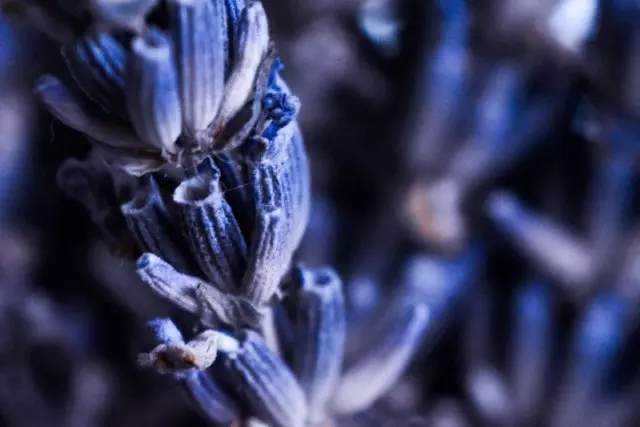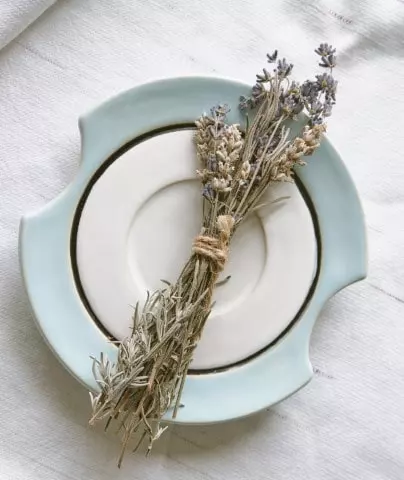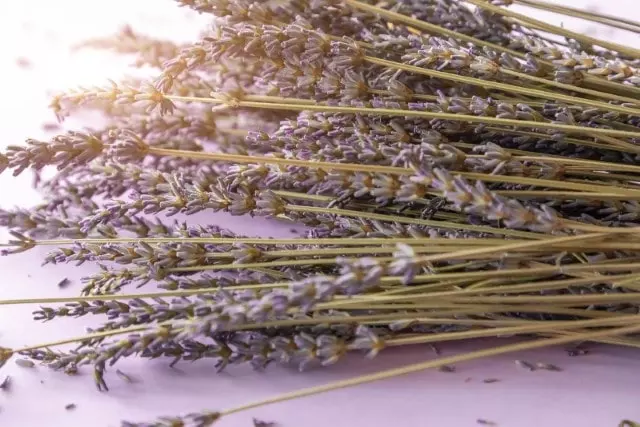Lavender, with the scientific name Lavandula, is in fact a genus of aromatic plants that are highly prized both for its hardiness and for the pleasant scent that its characteristic bluish-colored inflorescences give off, used in a multitude of aromatic and cleaning products. Because lavender is an easy and beautiful plant to grow, many people are encouraged to grow their own lavender at home, although to take advantage of its medicinal properties or to better preserve it, it must be dried first. If you want to learn how to dry lavender using different methods, join us in this article.
Table of Contents
How to Dry Lavender in the Sun
The best way to sundry lavender is to harvest the plant just before the flowers open. Follow these steps:
- Cut the stems as long as possible, pruning them from the base. As always, use sharp, sterilized pruning shears.
- Then use a cutting board that you don’t need or any other suitable wooden surface. The important thing is that it allows the lavender to spread on it over its entire length and that the stems are not too crowded, so that the sun can still shine on them. The material of the surface is important, as metal gets too hot and burns the lavender, while some plastics can melt.
- Place the used tray in the sun, in an area where it will receive as many hours of direct sunlight as possible. This can be indoors or outdoors, the most important thing being not to get the stems wet and to get as much light as possible.
- If the weather in your area is warm enough, lavender can be dry in about a week or maybe even less. You will know lavender is dry when the flowers have lost their vividness of color and have turned a soft, light purple. At this point, separating them from the stem should be very easy simply by hand.
This method is quite fast for a natural method, although one drawback is that the flowers lose much of their characteristic decorative color.

Microwave Drying
Dehydrating any kind of leaves in the microwave is very easy, and lavender is no exception. There are several methods for drying lavender leaves and flowers in this way.
- The one that gives the best results also requires silica sand, a product that, although it looks lab-made, is actually very easy to find as aquarium or cat litter. Place about two inches of this sand in a deep microwave-safe container and place the lavender flowers or leaves on top, separated and wide open, then cover them with another slightly thinner layer of sand. Then microwave on full power for 2-4 minutes and wait 24 hours before touching them.
- The other system is less precise and a bit more labor intensive, but also simpler in return. Place your lavender leaves and flowers on a plate, well separated one by one, making sure that all the leaves and flowers on the plate are about the same size. Cover with cling film and cook for 1 minute on full power – still not crisp and dry? Add 20 second periods until done.
How to Oven Dry Lavender
To dry them in the oven, place your lavender leaves, loosely packed and washed, on a tray covered with baking paper or parchment paper, which is ideal for this purpose. Spread them out as much as you can, always in a single layer and without stacking or touching.
Place the tray in the oven and set the oven to a very low temperature. Oven drying should never be done at more than 176 °F (80°C) or you will destroy the beneficial properties and natural flavor of lavender. If your oven is electric, leave the door slightly open, while if it’s gas, turn it off and open it for half a minute every five minutes.

Drying In a Dehydrator
Food dehydrators are quite useful for herbs, as they allow you to do it comfortably like in the oven, but with less risk of burning them. Place the leaves or stems as open and separate as possible in your dehydrator, set it below 114.8 °F (46°C), and simply wait until they are ready.
Fan Drying
If you have to dry really large quantities of harvested lavender, this is by far the best method. Just set up a warm, low humidity room with a good fan. Stack the lavender as open as possible, or hang your bunches tied upside down as if you were going to use traditional air drying.
Then simply point the fan to the sides of the lavender or down the lavender, so that the moisture around the lavender is blown away, but always without the airflow pointing directly at the lavender, as this could blow away the flowers or their scent.
Where to Buy Dry Lavender
Many people do not have time to dry lavender at home and always ask where to buy dry lavender?. We recommend you the best places to get the best dry lavender.
What To Do With Dried Lavender
There are many things you can do with dried lavender:
- Hair conditioner.
- Handmade soap.
- Soothing and bad breath infusion.
- Mite repellent.
- Homemade air freshener.
- Facial steam.
- Aromatic centerpieces.
- Lavender for your baths.
Now that you know the 5 ways to dry lavender, you may want to learn more about growing the plant at home. Here’s how to propagate lavender and how to grow lavender in a pot.




